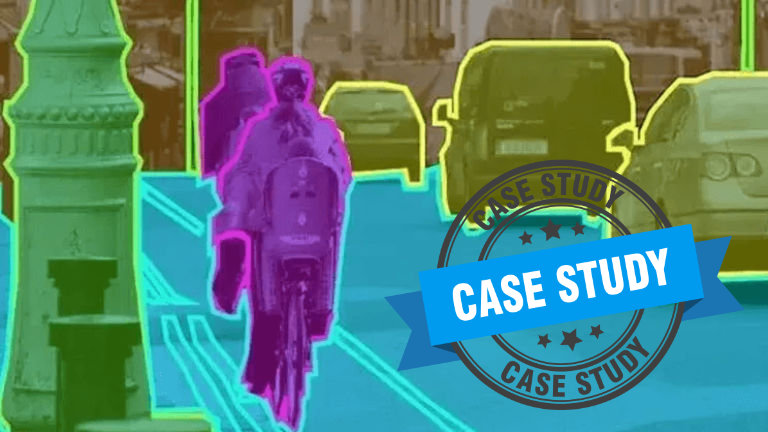Labeled datasets are the real game-changer. These datasets include annotations, categories, or labels, which allow algorithms to learn from patterns and make accurate predictions.
Understanding Datasets: The Foundation of Machine Learning
At its core, a dataset is a structured collection of data that serves as the raw material for training machine learning models. Think of it as a treasure trove of information waiting to be deciphered. Datasets can take various forms, such as images, text, audio, or numerical values. These data pieces are like puzzle pieces, and the role of machine learning is to assemble these pieces into meaningful insights.
Imagine having a wide-ranging collection of satellite images depicting landscapes from around the world, and your challenge is to educate a computer to recognize and categorize different types of terrain. This is where the transformation from a simple dataset to a labeled dataset begins—a process known as data annotation.
Labeled datasets can train AI models to accurately recognize and predict with precision by providing clear labels. This breakthrough empowers applications such as self-driving cars, speech recognition, and personal assistants. It enhances user experiences and unlocks new capabilities. The high-quality annotations in labeled datasets are crucial for improving the accuracy and reliability of intelligent algorithms. They enable businesses to make data-driven decisions and achieve efficiency and insight.

Machine Learning and Its Human Inspiration
Machine learning (ML) allows computers to learn without being explicitly programmed. It is rapidly changing our everyday lives. But there are many challenges that need to be addressed, such as bias, security and transparency.
Data Annotation Creates Labeled Dataset
Data annotation is the meticulous process of adding context and meaning to raw datasets. It involves attaching labels, annotations, or metadata to data points, making them understandable for machine learning algorithms.
These annotations serve as guiding lights for algorithms, enabling them to learn patterns, make predictions, and ultimately, develop a nuanced understanding of the labeled dataset
Who are the Annotators?
Annotators are essential players in the process. They could be domain experts, specialists in a particular field who understand the intricacies of the data, or they might be skilled annotators trained in specific annotation techniques. Their role is pivotal in translating human comprehension into annotations that algorithms can grasp.

Data Annotation Explained
In the world of machine learning and artificial intelligence, the saying “garbage in, garbage out” holds significant weight. This underscores the importance of high-quality data in training robust and accurate models.
The Impact of Labeled Datasets
The journey from a simple dataset to a labeled one might appear unassuming, yet its impact is nothing short of revolutionary. Labeled datasets lay the essential groundwork upon which machine learning models are meticulously crafted. These datasets empower algorithms to comprehend and extrapolate from labeled instances, transforming raw data into actionable insights.
Labeled datasets are not just theoretical concepts; they power real-world applications that have become integral to our daily lives. Consider the marvel of ChatGPT. Behind its ability to understand context, respond coherently, and offer assistance lies a meticulously curated labeled dataset. This dataset, painstakingly annotated by human experts, allows ChatGPT to learn from vast examples of human conversation, providing you with meaningful and contextually relevant responses.
The significance of labeled datasets isn’t confined to just virtual assistants. Think about how image recognition technology has evolved. The accuracy with which your smartphone identifies faces or the way autonomous vehicles distinguish pedestrians from lampposts—they owe their prowess to labeled datasets. In these cases, countless images were meticulously annotated, enabling the algorithms to discern patterns and make split-second decisions with remarkable precision.
From medical diagnoses to personalized recommendations, from speech recognition to sentiment analysis, labeled datasets are the unsung heroes driving innovation across industries.

Understanding Image Labeling
Images have a distinct language machines decode. Image labeling, adding meaning to each pixel, is key. Let’s uncover methods enabling AI to understand visuals.
Conclusion
Datasets are collections of structured or unstructured data, carefully curated and organized for analysis. They can range from weather patterns to social media posts, from financial data to medical records. Labeled datasets elevate this concept by introducing meticulously assigned human-labeled tags or annotations to the data, infusing it with invaluable context and significance.
Whether it’s refining algorithms for wildlife tracking, enhancing gesture recognition for augmented reality, or decoding patterns in climate data, labeled datasets stand as the driving force behind AI-driven progress.
DeeLab, a business unit of Tailjay, serves as a dynamic data annotation hub, connecting skilled annotators with AI projects. Our mission is to offer flexible and agile annotation services, nurturing collaboration with R&D teams and other industry players. Our vision is to drive AI innovation by delivering precise and dependable annotated data for various applications.




